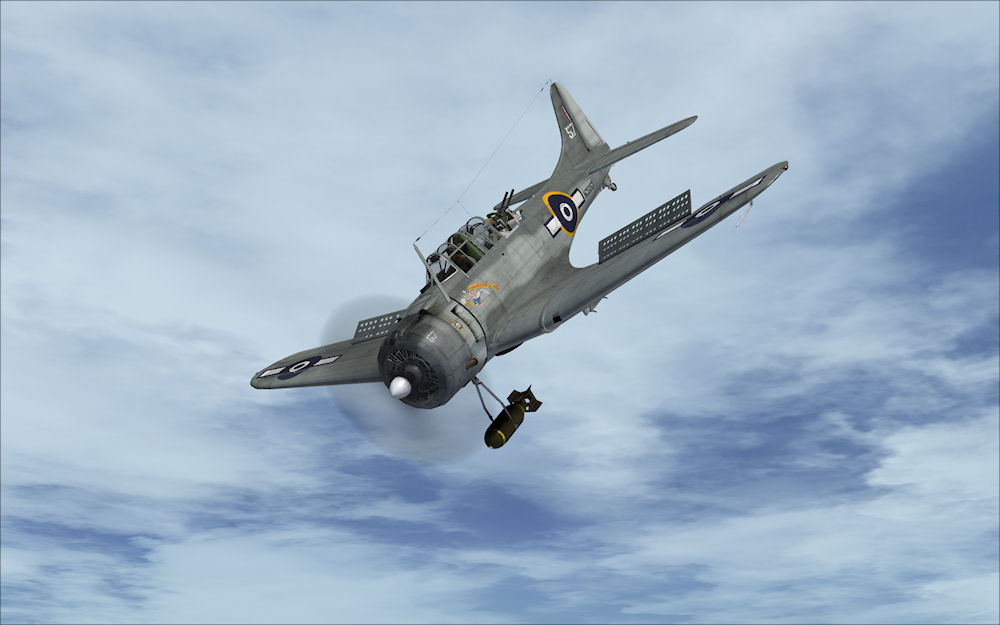

In April 1939 orders were placed for 57 SBD-1s and 87 SBD-2s, the former for the Marines, the latter to go to the Navy. The first phase of the museum is Hanger 37, a 42,442-square foot former seaplane hangar that survived the 1941 attack on Pearl Harbor, features a 200-seat theater and a 25,000-square foot exhibit area, which highlights the story of military aviation in the Pacific during World War II. The new aircraft, built at Northrop's El Segundo plant, which had become a division of Douglas Aircraft, evolved into Douglas' famous Dauntless dive bomber. The Pacific Aviation Museum Pearl Harbor (PAM), located on Ford Island in Pearl Harbor, opened to the public on December 7, 2006. His oxygen supply malfunctioned affecting his lungs. Best led his squadron against the carrier Hiryu, which was hit by four 1,000 lb. bomb in the center of the flight deck, dooming the akagi. While his wingman scored near misses, best placed his 1,000 lb. Mid-morning on June 4, Best and two wingmen aborted an attack on the already targeted carrier Kaga, turning instead to attack the nearby carrier Akagi. Naval Academy was the commanding officer of Bombing Squadron Six (VB-6) aboard the U.S. Murray flew during the attack ont he Japanese aircraft carrier Akagi on June 4, 1942. Richard Best and Aviation Chief Radio man J.F. This aircraft is displayed in the markings of the Dauntless dive bomber that Lt. 5,936 of these dive bombers were built by the Navy, Marine Corps and Air Force between 1940 and when production ended in July 1944. They could reach speeds of 250mph and ranged over 1,200 miles. With a wingspan of 41 feet, 6 inches and a length of 32 feet, 8 inches, they weighed 10,4000 pounds loaded. The SBD-3 Dauntless were equipped with 1,000 horsepower Wright R1820-52 Cyclone 9 cylinder engines. When the bomb was dropped, the underbelly Y shaped "trapeze" pivotd forward and down to guide the ordinance past the popeller arc. The Dauntless was the standard shipborne dive-bomber of the US Navy from mid-1940 until November 1943, when the first Curtiss Helldivers arrived to replace. The US Navys primary dive-bomber at the wars start, the bomber. They were opened for speed control during the near vertical descent towards a target. The Douglas SBD Dauntless was sturdy enough for pilots to dive at a near-vertical 80 degrees. Produced between 19, the aircraft was adored by its flight crews which praised its ruggedness, dive performance, maneuverability, and heavy armament. The Dauntless and its brave aircrews are best remembered for sinking all four of the Japanese carriers at the Battle of Midway, earning the nickname "Slow But Deadly." Large dive brakes were built into the trailing edge of the wing. The Douglas SBD Dauntless was the mainstay of the US Navy's dive bomber fleet for much of World War II (1939-1945). Although obsolete by some standards, it proved to be a formidable weapon in the Coral Sea, and the battle for the solomons. The Douglas SBD-3 Dauntless, first delivered to the Navy in February 1940, is regarded as the most successful American dive bomber in World War II. O'ahu - Honolulu - Ford Island: Pacific Aviation Museum - Douglas SBD-3 Dauntless


 0 kommentar(er)
0 kommentar(er)
